Plaster Ice Cream Adverts
Object
This is our last blog post until the new year as the lab will be closed for a couple of weeks over Christmas. So we’re having a flashback to a couple of summers ago when a student worked on two plaster ice cream adverts. These adverts depict a boy and girl holding large ice cream cones with ‘RITZ’ on them. Both children have blonde hair and red shorts with the girl also wearing a red bow and a blue necklace. They stand on a three tiered base with the following writing:
Girl Advert
ICE CREAM
With a FACCHINO Cone
It’s lovely
Boy Advert
ICE CREAM
With a FACCHINO Cone
Oh Boy
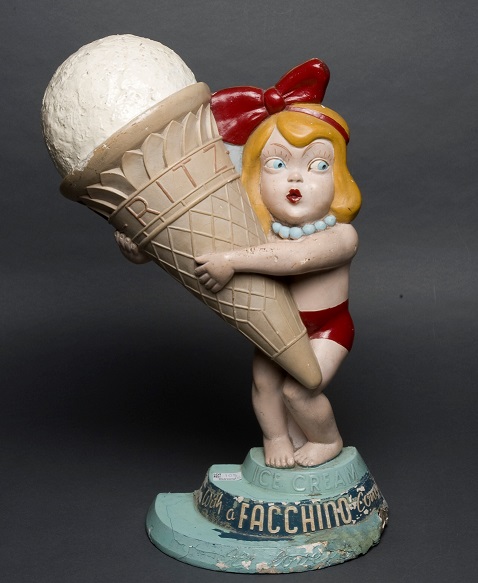
The adverts will have been made using moulds, where layers of plaster were applied in thin layers until the desired thickness was built up, they would then have been painted. It’s clear from visual examination that several areas have been repainted at some point in the objects history, most notably the bases, and the areas with red paint.
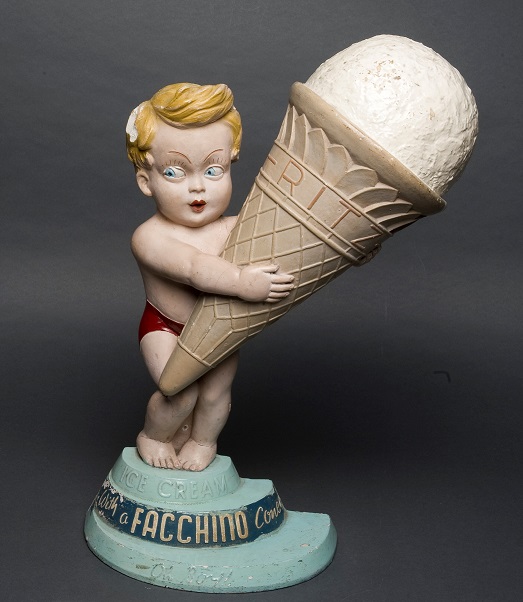
The adverts were created for and used by the Facchino family who started an ice cream business around the turn of the 20th Century. Enrico Facchino moved to Birmingham from Italy in 1898 and by 1919 had stopped making ice cream and focused solely on producing biscuits for ice cream. Antony Facchino registered three patents in the 1930’s, one of which included a cone similar to that which the children are holding. The company stopped making ice cream biscuits in 1958 when Dominic Facchino founded the Mr Whippy ice cream company after being inspired by the Mr Softee company in America. This means that the ice cream adverts wee likely produced between 1930 and 1958.
The primary purpose of these figures was to advertise the Facchino cone though comparable examples where the bases have been fully repainted would suggest that once the Facchino brand ended they were reused simply to advertise ice cream.
Condition
- Covered in dirt
- Flaking paint
- Cracks in the plaster
- Failing old repair
- Areas of missing plaster
Conservation
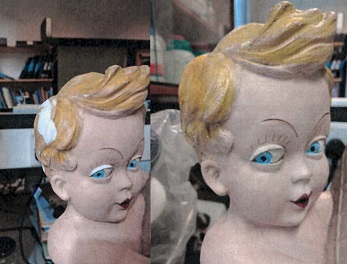
Although comparative treatments were researched, a number of dry cleaning methods were tested on the interior of the plaster to determine their effectiveness at removing dirt, however as the majority of the dirt was ingrained none of the methods were appropriate. As such, wet cleaning methods were employed in order to remove the dirt and leave a clean surface. The same solvent that was used on the bare plaster was not effective at removing dirt from the painted surface of the adverts and dry cleaning also made no significant difference. As such, eight solvent, or solvent mixes were used on the painted areas to see which would remove the dirt without also damaging the paint. The results of this test was referred to when considering a consolidant for the flaking paint, which was applied using a brush.
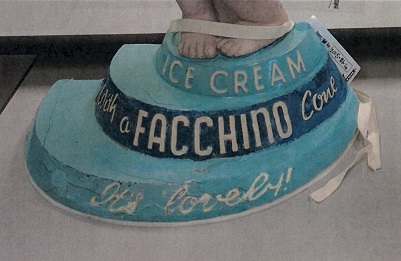
The areas of missing plaster were infilled using milliput as it was easy to use and gave a smooth finish. Other materials were tested but were found to shrink on drying or be difficult to shape. These areas were then painted to match the colour scheme of the adverts so the eye wasn’t drawn to the damage. The large repair to the base of the girl figure however was treated differently to the areas of missing material since although there was missing material, the repair was actively degrading. As such the repair was removed using mechanical means and then the missing area was resculpted using milliput. This was then painted to match the base and the missing letters from ‘It’s lovely’ were added.
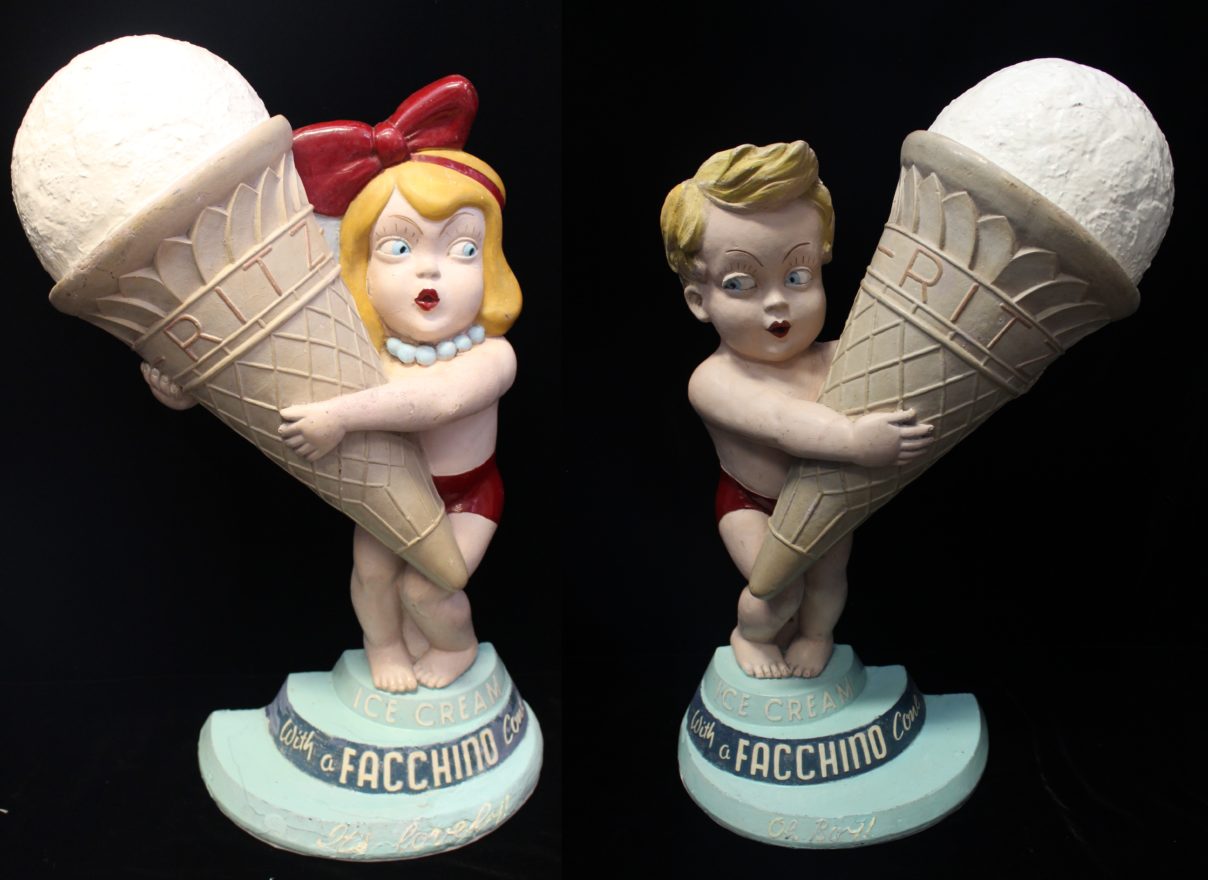
Finally it was noticed early on that there were a number of cracks in the plaster, including a structural crack along the boy figure’s knees. As these ice cream adverts were intended for display at Beamish Museum they would require stabilising to provide support. A suitable adhesive that would provide enough strength and support was injected into the cracks using a syringe and needle. As the boy figure was sagging around the knees from the structural crack, a strip of elastic was tied around him and tightened in order to hold the two parts in alignment while the adhesive set.
All of us here at Durham University Conservation Team hope you all have a lovely time over the holidays!

3 Comments
Nicola Facchino
Ann Greatrex
Chris Hopkins